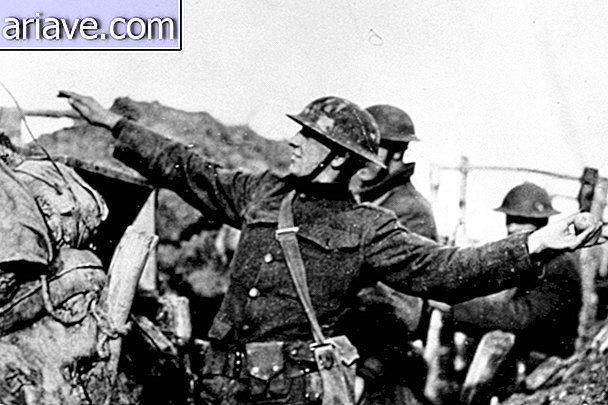5 Aspects That Made Medieval Knights Ineffective
Most people believe that the ancient medieval warriors were incredibly powerful, cunning, and fearless. However, as Gleb Oleinik of the ListVerse portal pointed out, although iconic knights of the Middle Ages played a key role in history, they were not what we might call super-efficient combatants. Here are some reasons for this:
1 - The logistics
If providing supplies, shelter, weaponry, and facilitating the movement of armies into enemy territory is no easy task, imagine the difficulty in the Middle Ages! After all, besides being decentralized - remember that the domains were organized into fiefdoms? Complicating the life of rulers when it came to gathering resources for war, knights never traveled alone and always carried paraphernalia with them.

As Gleb pointed out, the knights always had their shoulder-bags, who in turn were responsible for carrying armor and taking care of the horses. In addition, each rider usually carried at least two animals in the campaigns - one for travel and the other for combat. This means that in addition to feeding the warriors, medieval armies had to supply the needs of a battalion of animals and helpers.
To make matters worse, horses, as you know, must graze, which means that the advance of the troops was compromised by the needs of the animals, especially when wars took place in winter or in countries with arid climate - such as the Crusades.
2 - The cost
As you read the above, did you even wonder about the cost of this whole joke? It's no secret that wars are expensive - very expensive! -, and in the Middle Ages was no different. Think of the elaborate armor, swords, shields and powerful horses of medieval warriors ...

According to Gleb, in the case of English knights, for example, in the mid-13th century, battle “equipment” was estimated at 32 pounds, the equivalent of an archer's 10-year salary. Not to mention that the horses could cost up to £ 300! By contrast, the cost of keeping an archer was 4% of the total invested in a knight - while medieval artisans earned only a few pounds throughout the year.
Thus, at the cost of maintaining a single medieval knight, it was possible to equip a dozen soldiers or archers, or hire half-heavy cavalry soldiers.
3 - The lack of military leadership
Not that the medieval knights had no leaders. The problem is that often the men who led the armies had no war experience - and often were nobles in the nobility seeking fame and glory. Thus it was common for warriors to be sent into battle without details such as strategy, terrain or even the outcome of previous combat being considered.

Moreover, another problematic issue was the command structure, because kings depended financially on powerful nobles, and these in turn often led their own knight group to war. Thus, it was not always possible to control the troops as a single entity, and it was not uncommon for certain nobles to act on their own, generating a series of conflicts between members of the same army.
According to Gleb, in some cases, soldiers were fortunate enough to lead figures such as King Edward III of England, who made the country one of Europe's largest military powers. But overall, that wasn't the case, no!
4 - The lack of pattern
Medieval knights were the equivalent of the professional soldiers we have today and spent much of their time developing and training their skills - such as using a variety of weapons, mastering riding techniques, fighting armor, and so on. In addition, the knights participated in tournaments when they were not warring, which allowed them to keep up their skills.

However, according to Gleb, despite so much practice, there was no standard training system for "enabling" knights, and once a subject earned this title, he was responsible for continuing his military development. Therefore, when soldiers were gathered to go to war, in addition to having different fighting styles and specialties, the skill levels were very different.
This could be a big problem if a group of horsemen had to face an army that had followed a strict training regime and was prepared to fight and function as a unit. After all, this kind of practice was not only vital for developing military skills, but also ensuring that soldiers maintained the same level and could work together.
5 - The damn archers
Although the medieval knights were imposing, pompous, and set off for battle equipped with their glittering outfits, the archers — those guys who "cost" much cheaper to armies - were their nightmares. That's because, despite all the paraphernalia they wore, the knights were extremely vulnerable to the arrows thrown by their colleagues.

According to Gleb, mail quotas (which you can see in the following image), for example, could be pierced by arrows thrown at 180 meters and, considering that a skilled archer was able to fire an average of 12 arrows per minute. This means that the knights could be slaughtered long before they approached the enemy.

Not to mention that even when they didn't hit the riders, the archers could still hit the horses. It's okay that the introduction of the armor helped a lot, but even so, the knights remained fragile targets - especially after a new weapon came into play: the crossbow.
The beasts were able to cut through the metal plates that made up the armor; So it is no wonder that the knights were not at all a fan of the archers and referred to their weapons as cowardly and dishonorable. Moreover, no “well-born” man liked the idea of being killed by any citizen who knew how to handle the bow and arrow, and in the 11th and 12th centuries the nobility even tried to ban the use of these weapons.

Born or not, the fact is that these warriors were lethal and extremely effective - and the English archers who fought during the Hundred Years War in France became especially famous. Despite being numerically inferior to the French troops (reinforced by countless knights), the British forces managed to win important victories thanks to the skilled archers, such as the Battle of Crécy, Poitiers and Agincourt.
* Posted on 1/7/2016











